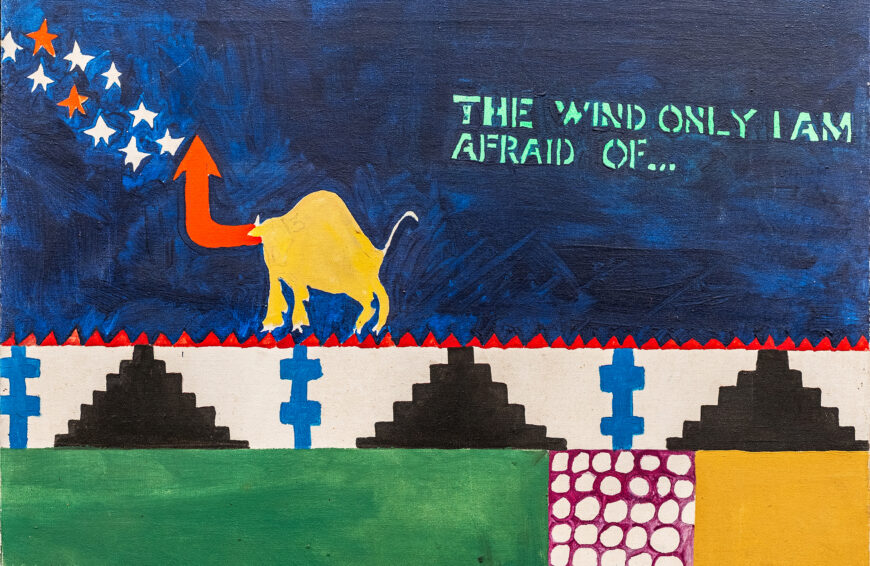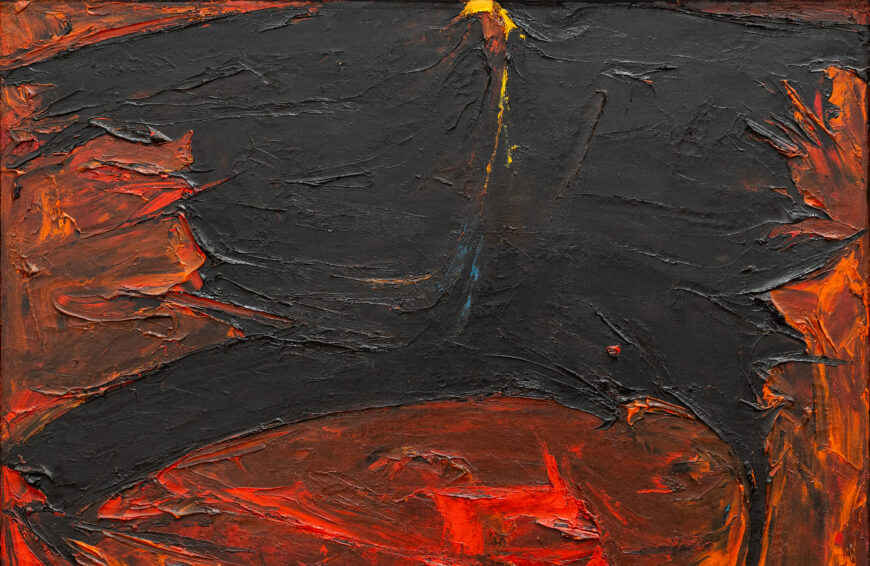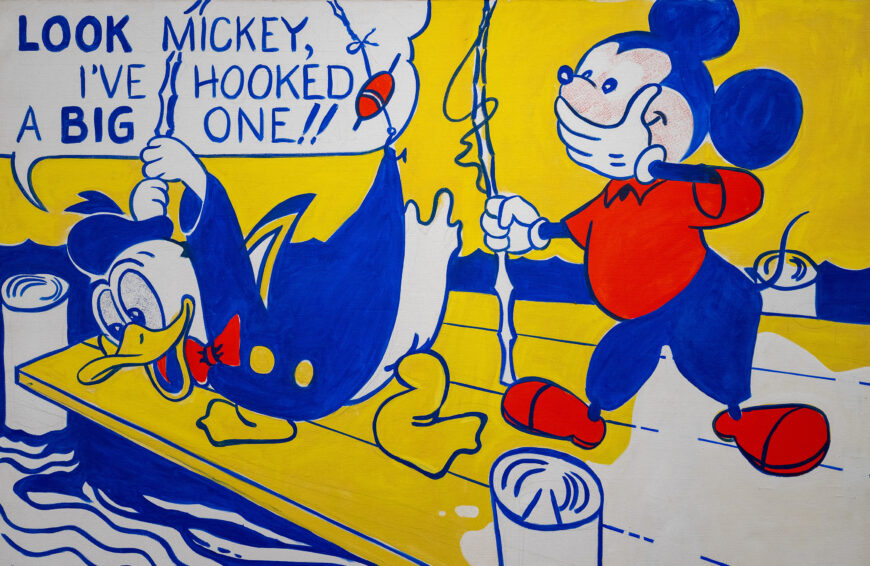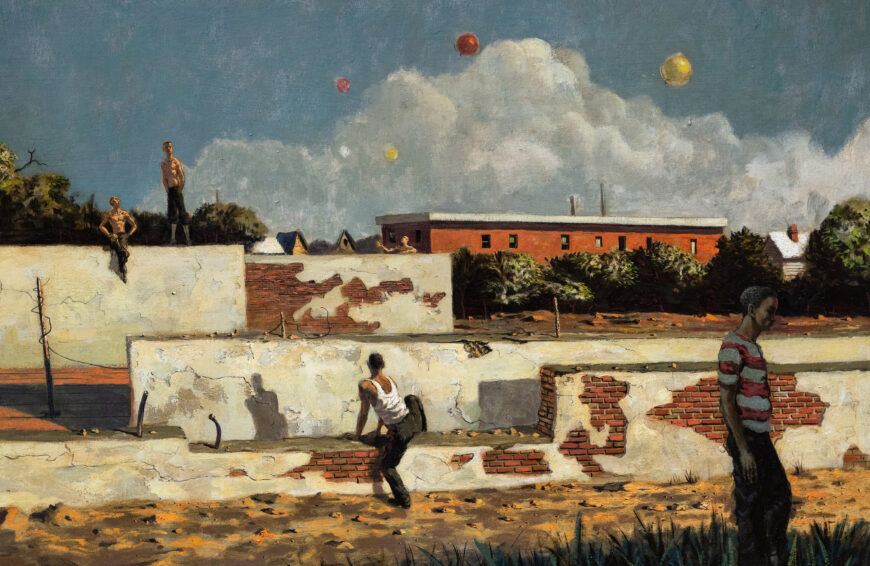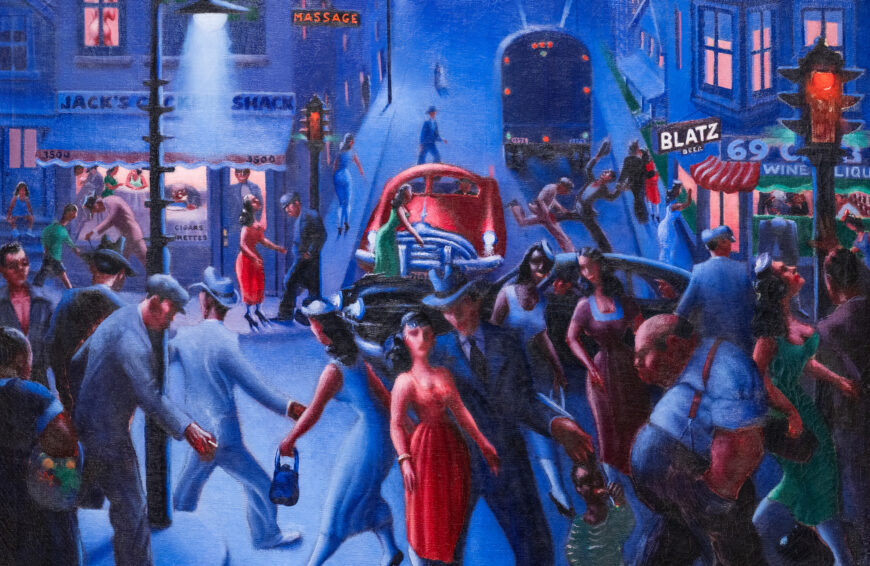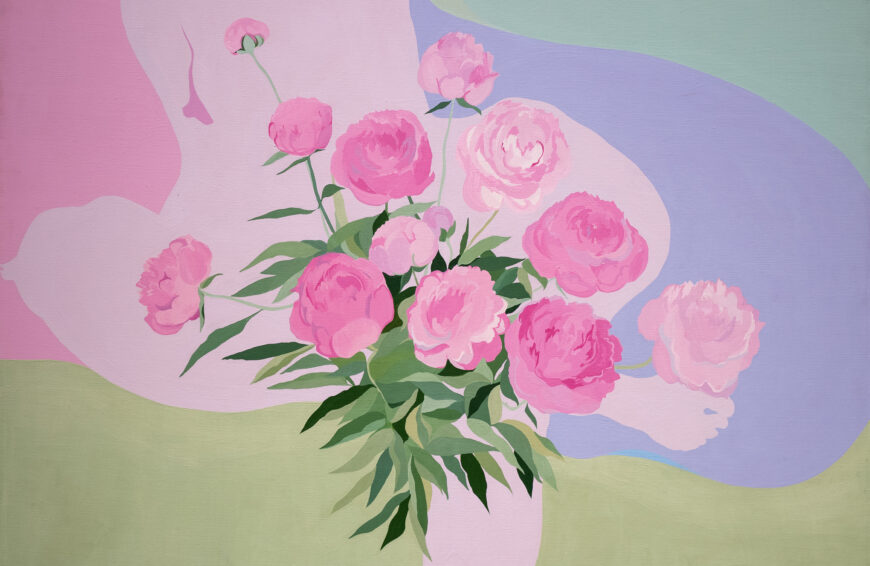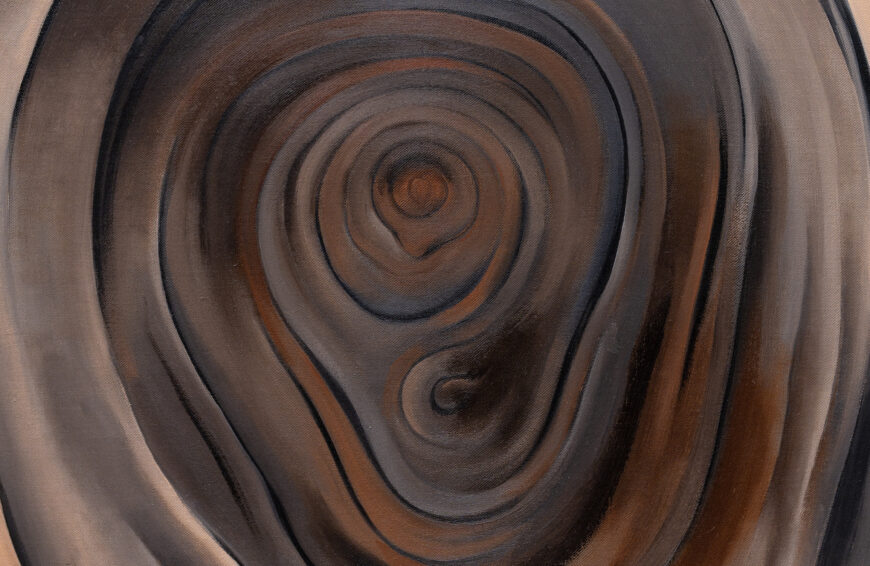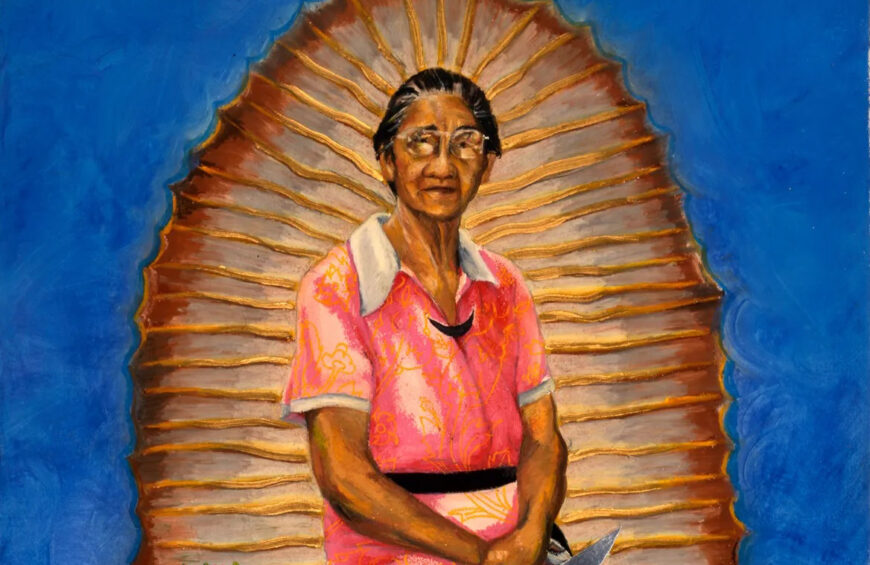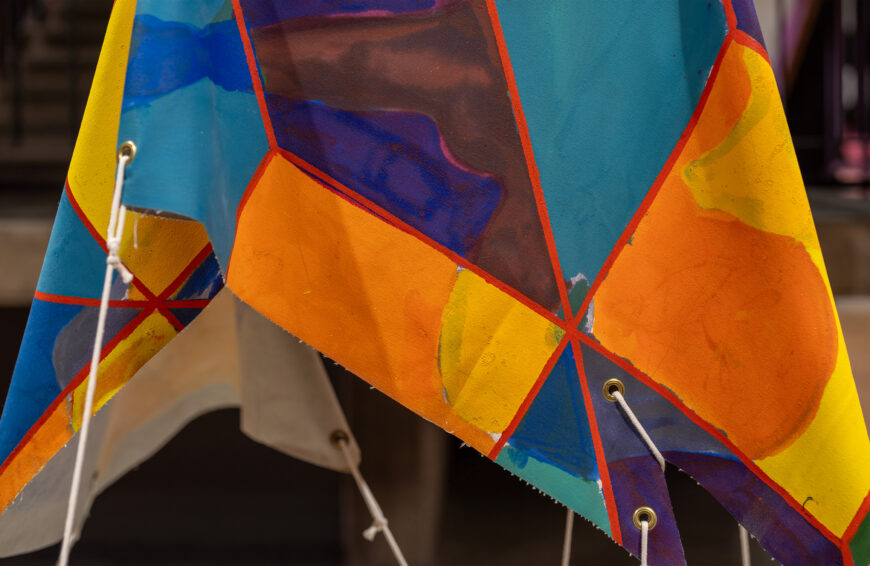Eldzier Cortor, Southern Landscape, 1941, oil on masonite, 44-1/8 x 35-3/4 x 3-3/8 inches (Virginia Museum of Fine Arts)
Eldzier Cortor, Southern Landscape
[0:00] [music]
Dr. Beth Harris: [0:06] We’re in the Virginia Museum of Fine Arts, and we’re looking at a painting by Eldzier Cortor called “Southern Landscape,” and this dates to 1941.
Dr. Shawnya L. Harris: [0:15] Eldzier Cortor was active during the ’30s and ’40s, and he was often identified with a type of Surrealism where there’s all of these odd juxtapositions.
Dr. Beth Harris: [0:27] It is unusual in the history of modernism to see Black female bodies out in a landscape like this.
Dr. Shawnya L. Harris: [0:34] You can see the curves repeated around the neckline and also the red vest that she wears, and even along the skirt, almost reminiscent of a body of water, which echoes the body of water that’s behind her, which has possibly an interesting subtext.
Dr. Beth Harris: [0:50] When I first come to this painting, I feel as though I’m looking at a figure who’s heading out with a basket to go on a picnic, something rather idyllic. But when I look closer, I see that her hands are grasping the chain that she wears around her neck that a cross hangs from. That cross is echoed in the landscape behind her.
Dr. Shawnya L. Harris: [1:10] This juxtaposition of the landscape and the woman is reinforced by this wall that she rests on, obviously in pursuit of a space where she can possibly carry out this picnic. Her back is against this scene of what appears to be flooding. It makes you wonder if she’s seen the scene behind her, and she turns away in a type of aversion to that flooded landscape.
Dr. Beth Harris: [1:36] When we look closely at the basket, it becomes more clear that we’re looking at a picnic basket, but it’s not filled with food and the things you would expect of a picnic.
Dr. Shawnya L. Harris: [1:45] We do see…It looks like a piece of fruit and a jug, but then there’s a book and also an image with what appears to be a man. Could this be the person that she hopes to meet or a memento of someone that she once loved?
Dr. Beth Harris: [2:00] In the landscape we see graves, one marked by a cross, then, as we move further back, these telegraph poles, which are bending over because of the waters of this flooded landscape.
Dr. Shawnya L. Harris: [2:12] In an almost dreamlike fashion, you see the cross around her neck, the poles that are in the flooded waters that are also in the form of a cross, the cross that’s on the top of the church, but also in the cemetery. There’s this triangulation of crosses.
Dr. Beth Harris: [2:28] The church is not flooded. In fact, it’s the only building that we see which is not half immersed in water. We know that Cortor on his travels south said that he saw a scene of flooding and thought about the way that during an emergency like a flood, you grab what you can that’s important to you when you depart.
Dr. Shawnya L. Harris: [2:50] This theme is really important during the late ’30s and ’40s with the presence of a lot of flooding throughout the South, which forced people to migrate to, if you will, higher ground to escape the devastation of this. This echoes this environmental crisis that was occurring in several places in the South.
Dr. Beth Harris: [3:10] When we come back to the figure, that’s what I am left with, this sense of a beautiful young woman whose life has been forever changed by the tragedy of what we see behind her.
[3:23] And at this moment, I’m not even sure that that’s really behind her. If we’re thinking about this as almost a dreamlike landscape, this may be what she feels, what she sees in her mind. And in actuality, the river behind her is not blue. The sky are these streaks of blue and white that are very dramatic. This is not an entirely real-looking landscape.
Dr. Shawnya L. Harris: [3:47] The large tree that serves as a backdrop, if you look to the right, the adjoining tree, there’s that single leaf, and it makes you wonder about this idea of survival. Is this an image of bleakness, or is this an image that speaks of some form of hope that could be found in this work?
[4:04] [music]
| Title | Southern Landscape |
| Artist(s) | Eldzier Cortor |
| Dates | 1941 |
| Places | North America / United States |
| Period, Culture, Style | Modernisms / Social Realism |
| Artwork Type | Painting |
| Material | Oil paint, Panel |
| Technique |


